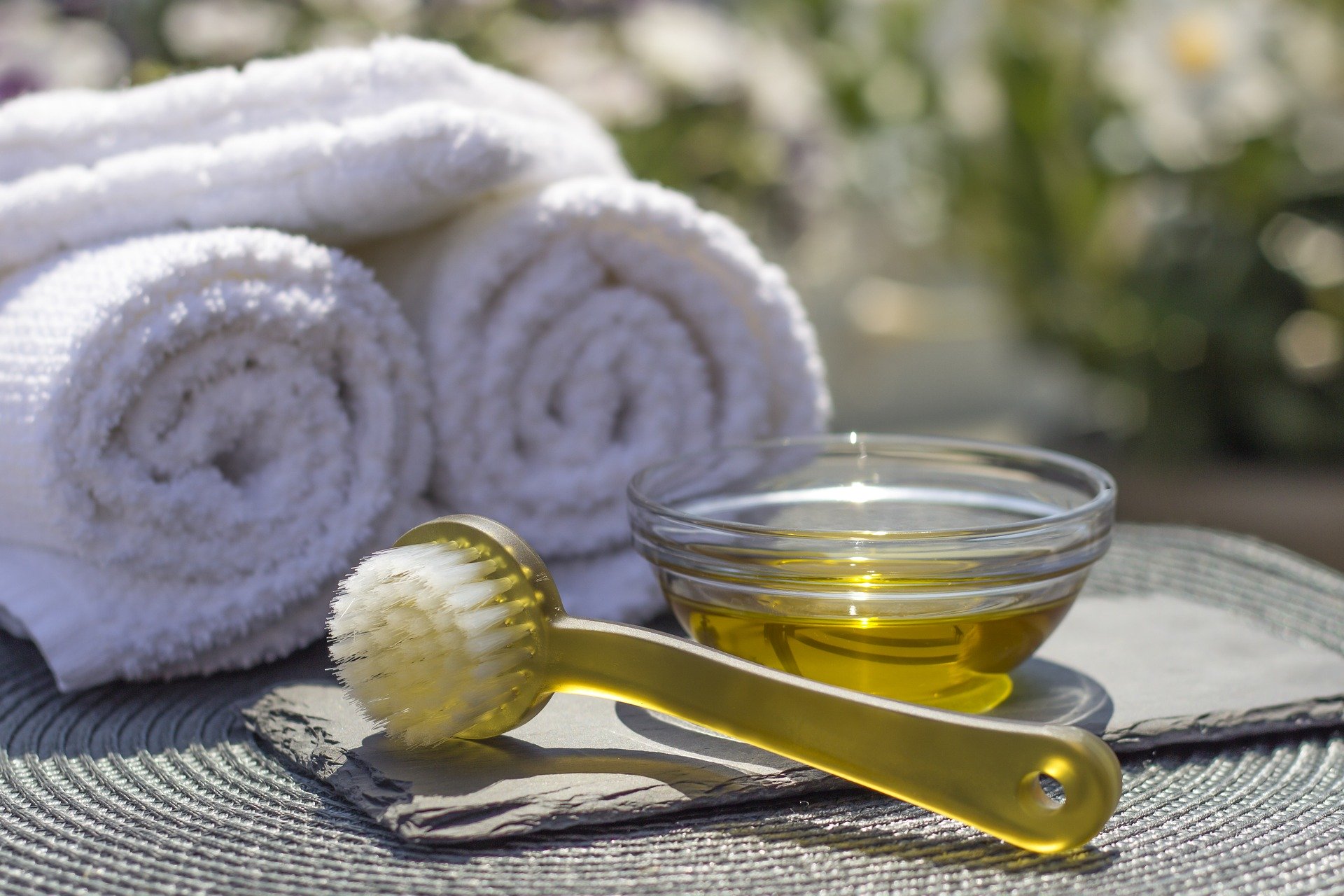
Warm oil massage is a gift for Kapha season and these times. Daily Ayurvedic self-massage called Abhyanga grounds and heals when you do it with warm oil; it is sublime. We all need a little grounding, pampering, and ease as the world trudges through this coronavirus pandemic.
There are profound instances like deep grief where oil massage can heal and simple ones. I’ll share a simple one here. This week I cut my husband’s hair. It was the first time I ever cut anyone’s hair, a glaring example of the ramifications of shelter in place. We went out on the porch and chatted while I combed and snipped. I found it a little scary, not so much the doing, but more the reminder of why I was cutting hair. Acting as a stand-in hairdresser reinforced the reality of the shift in our behavior due to the coronavirus.
Satisfied with his haircut, I kissed his cheek and headed for the shower to wash off the nervous sweat and hair clippings. On the way in, I put my oil bottle in hot water to warm it. After my shower, I oiled my body, ears, nose, and head. The warm oil soothed me and helped me release tension from barbering and shelter-in-place restrictions. Later that evening, when I went to bed, I slept deeply and peacefully without lingering worries.
Why Warm Oil For Abhyanga?

Of all the choices to relax, why oil? It is an effective and easy way to balance Vata dosha and move tension out of your body. Oil has a substantial guru (heavy) quality that calms Vata. Oil is food and moisture for your skin. Massage moves in a rhythm that releases tension from tissues. Active self-care can shake you out of a tamasic state of mind.
Warm oil balances the cold qualities of vata and Kapha. Self-touch connects you to your body and the present. When you book a massage therapy appointment afterward, you will feel terrific. You may not realize you can capture some of this effect with self-massage while social distancing is in place.
Daily Self-massage
Self-massage works, like other forms of therapeutic massage, feeding skin, relaxing muscles, and moving lymph. Abhyanga helps clear away dead skin cells, nourishes your skin biome, and promotes a healthy, youthful appearance. Massage is grounding, shifting you into the parasympathetic nervous system where ease and healing are more accessible. Click this link for all the ins and outs on Ayurvedic daily massage.
General Guidelines for warm oil
Recently I did a poll in a class I teach on how people warm their oil. The answers were somewhat diverse and reflected their approach to life in general. Only warm oil you are going to use in the near term. Don’t overheat your oil because it could oxidize and degrade the quality. Here are some of the ideas to safely warm your oil. Always test the temperature on your arm or finger to be sure it won’t burn you as you do with a baby’s bottle.
Tea Mug
You take a tea mug and partially fill it with hot tap water. Put your small oil dispenser into the cup and allow it to warm for at least 10 minutes. Use plastic or glass for your dispensing bottle with this method, it doesn’t matter.
Tea Light Warmer
The tea-light candle flame provides heat. Pour oil into a glass or ceramic container that fits on the warmer. Do not leave this unattended. Be sure to test the temperature.
Oil Warmer
The professionals often use an electric warmer. Check that the temperature range of the warmer doesn’t go high enough to melt your bottle. 98F is fine. 212 F extended exposure can melt some plastic containers and burn skin. I have read horror stories about melted bottles and a leaky oily mess.
Baby bottle warmer
I have no experience with this, but I have a friend who likes them. Using a baby bottle warmer makes a lot of sense. Just test that your oil bottle fits in the warmer. Again don’t leave it on all day. Heat use the oil and shut off the unit.
If you are doing self-massage, you must try it with warm oil. Choose one of these methods or come up with your own. Safely warm your oil to enjoy the therapeutic experience of warm oil self-massage.
Ayurselfcare’s purpose is to educate on the benefits of Ayurveda. This article is not a substitute for professional medical care, treatment, or advice. All the material here is for learning purposes only. Always share strategy and work with your healthcare team.
